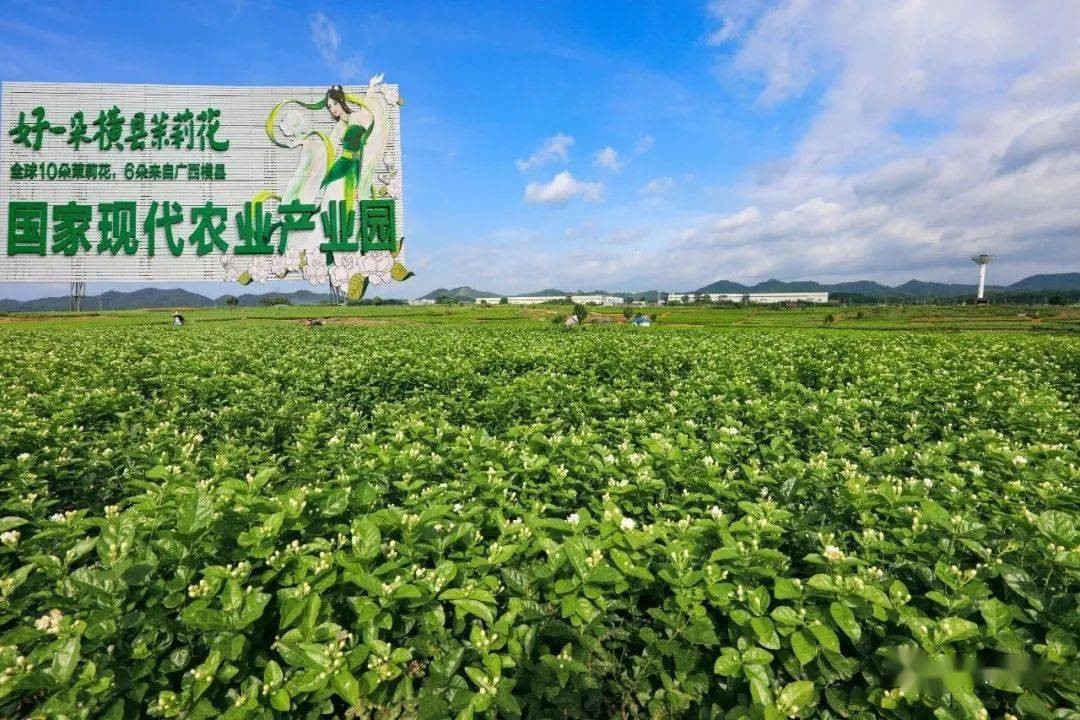 Hengzhou City, in Guangxi Province, China, supplies most of the world’s jasmine for tea blending.
Hengzhou City, in Guangxi Province, China, supplies most of the world’s jasmine for tea blending.
Mō Lì Huā
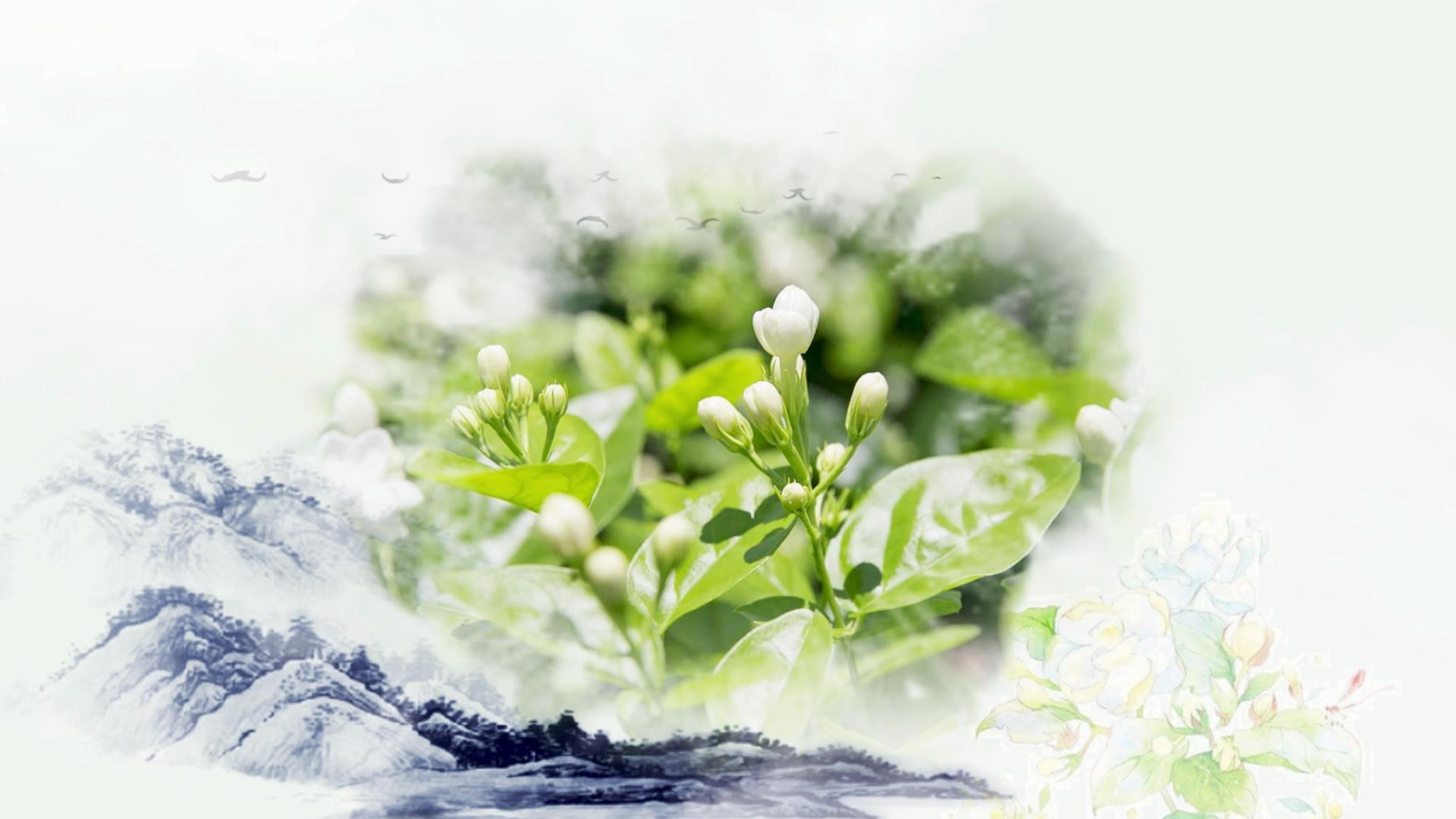
Fragrant and white, everyone praises it
Let me pluck you and
Give you to others
Jasmine flower, oh, jasmine flower. So gentle, so elegant.
The famous folk song “Jasmine Flower” conveys the unique tenderness and grace of the Orient. Famous for its delicate beauty, jasmine is said to have originated in Ancient Rome. During the Eastern Han Dynasty (AD25-AD220), the plant spread from India to Persia along the ancient Silk Road and finally arrived in China.
High-ranking officials and literati to ordinary people all adored its fragrance and delicate appearance, “pure as jade and clean as ice.”
The text “Notes on Customs and Traditions of Hengzhou” records that“In Hengzhou, jasmine is grown extensively, and some use it to weave fences. There are jasmines in all seasons.”
Borne on the fabled Silk Road, caravans traveled thousands of miles to China to seed Hengzhou city. Ample rainfall, selenium-rich soil, and warm temperature created the most romantic encounter in the world. At 23 degrees north latitude, jasmine found its ideal home at first sight and ever since, jasmine has loved this place.
Six of every ten jasmine buds in the world are grown in Hengzhou City. Millions of kilos of delicate flowers are processed in a modern agricultural, industrial park designated a “national characteristic town.”
Jasmine has been the most valuable brand of agricultural products in Guangxi for many years. Known as jasmine town, the brand value of jasmine and jasmine tea in Hengzhou City reached RMB21.53 billion in 2019. Buds sell for between $12 and $30 per kilo. Jasmine tea production in Heng County was 96,000 metric tons in 2021, representing about 75% of China’s harvest. Fuzhou in Fujian and Qianwei County in Sichuan produce another 20%.
The story of jasmine and Hengzhou is a tale of being in the right place at the right time, nature’s perfect match. Scenting was first described in a book by Zhao Xihu in 1240. Zhao used lotus, recommending three weights of tea to one weight of flower blossoms. By the Ming Dynasty, several detailed manuals circulated for scenting tea with sweet clover or rose and plum blossoms. In 1613 Xu Bo, in Fujian, first explained how to scent with jasmine relying on repetitions of several steps, each followed by a light roasting to remove moisture. The entire process took 15 days.
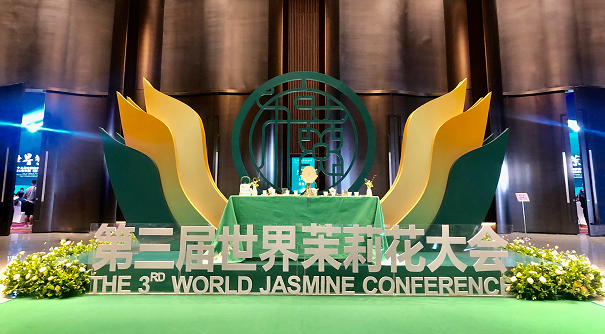
The city where jasmine flowers bloom welcomes visitors from afar who spread the fragrance from the “jasmine flower city” throughout China. There are 200 species of jasmine. Jasminum Sambac is the most widely used in tea making. Double flowers are the most popular but there are many variants. The simple flower variety known as Formosa is popular in Taiwan.
This video on how jasmine tea is made is courtesy the China Tea Marketing Association.
Spring begins a romance as the flowers meet the newly plucked tea. Spring tea and summer jasmine flowers are mixed at a strictly-calculated ratio. Hundreds of processes exist to make the miracle tea. The bitterness of tea and the sweetness of flowers are a perfect compliment. Jasmine grown in Hengzhou meets the high expectations of famous brands at home and abroad. Brands include Zhang Yiyuan (Beijing), Hua Mingyuan (Zhejiang), and Longtai (Taiwan). Eighty percent of the jasmine used by well-known tea companies such as Starbucks, Wahaha, and Master Kong is produced in Hengzhou. It has also given birth to more than 50 strong local tea companies, including Jinhua, Shunlai, and Dasen, which belong to the Top Ten Jasmine Tea Brands in China.
Combining jasmine with tea is only the start of the romantic story of Hengzhou Jasmine.
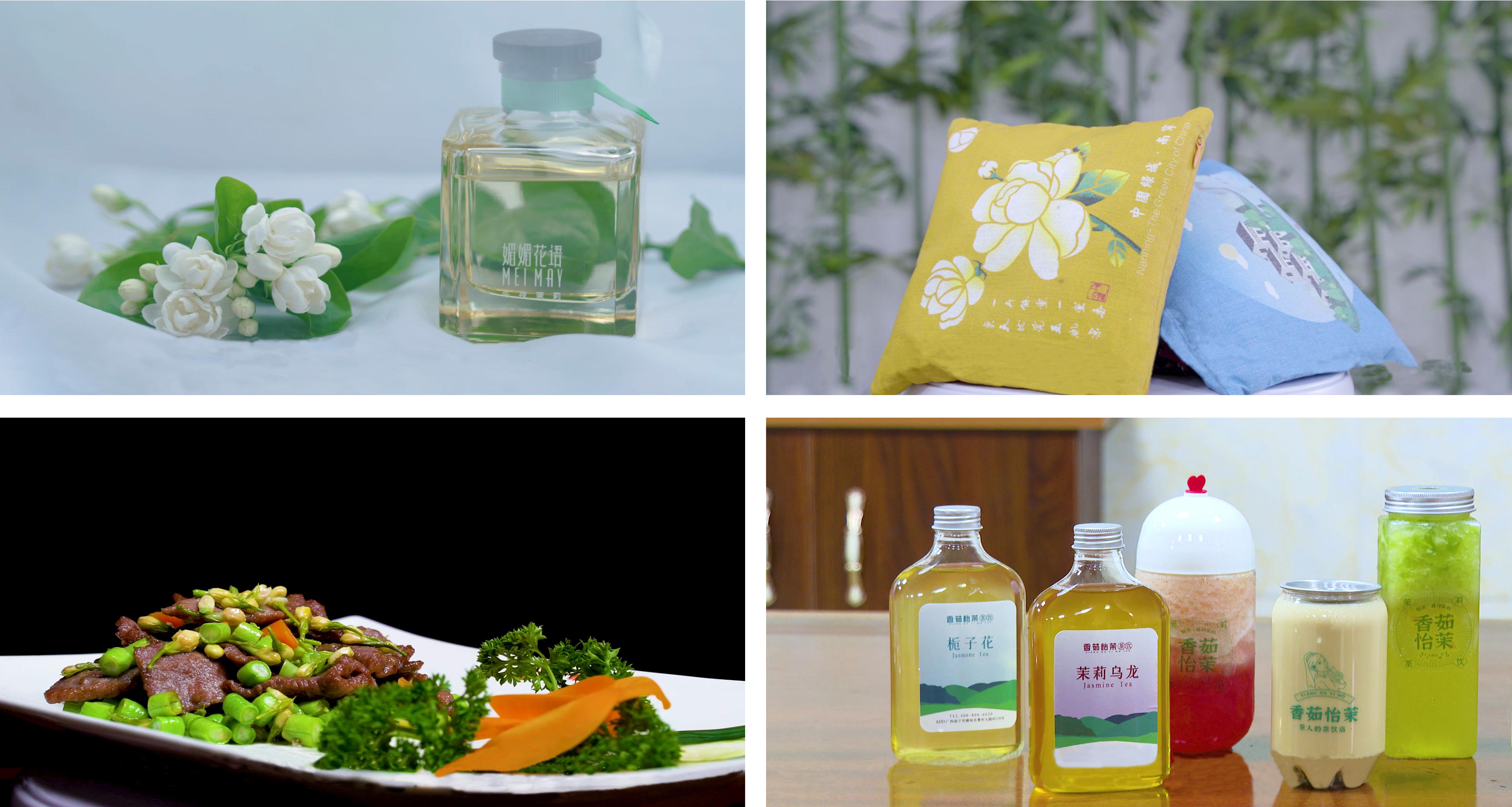
Along with the fresh scent of the flower, secondary uses for jasmine, each with higher added economic value, are growing in Hengzhou city. These include:
- Jasmine, as essence, can be made into essential oils, extracts, and perfume.
- Jasmine, in daily life, is used in scenting tea pillows, sachets, and bronze drums.
- Jasmine, as food, can be made into pastries, drinks, and dishes to enrich our cuisine.
- Jasmine has huge potential in the healthcare industry. The plant is used to treat liver disease (hepatitis), pain due to liver scarring (cirrhosis), and abdominal pain due to severe diarrhea (dysentery).
Jasmine attracts 600,000 tourists to Hengxian each year. They travel from around the world to appreciate the flower fields, smell the flowers, taste jasmine tea, and experience a jasmine feast.
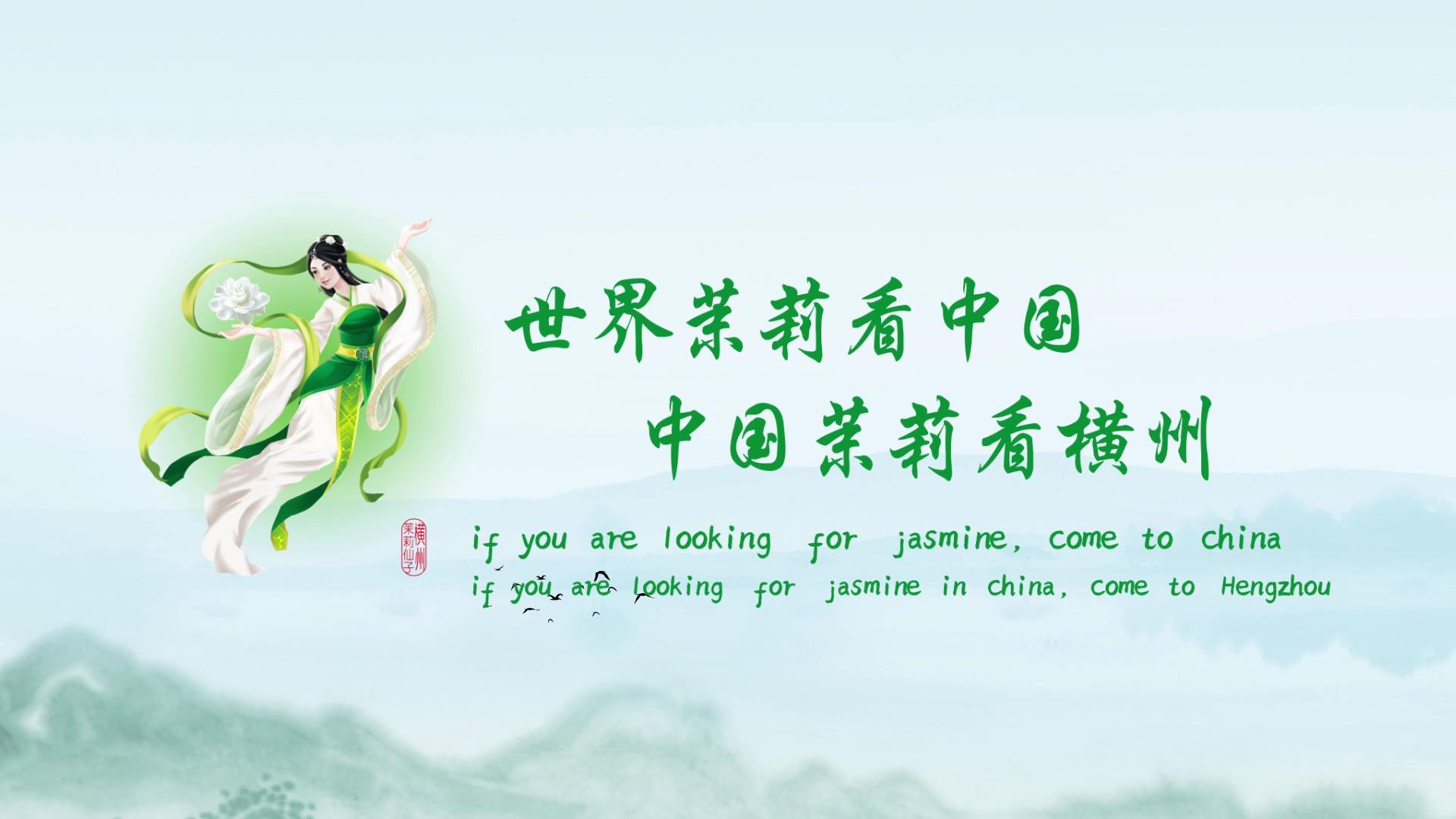
In 2000 Heng County was named Home of China Jasmine, and the technical process was established as the national standard. Nowadays, with the tailwind of the Belt and Road Initiative, the city is actively integrated into the domestic and international double cycle and is determined to promote the opening of the city and build an important node of the “eastward and southward channel of Guangxi.” Jasmine will once again set sail from Hengzhou to the world, lead the world’s new trend with high-quality development and work together to create a better future for the world-class jasmine industry.
Credit: Daniel Hong at Hong Tea for additional research.
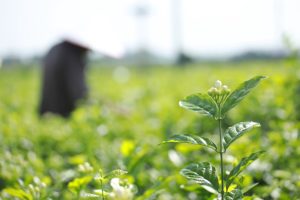
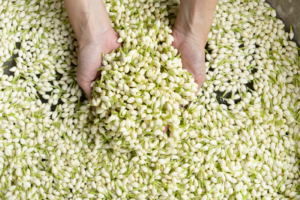
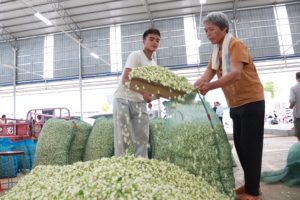
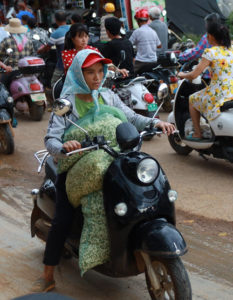
It is absolutely amazing how much work is put in to make a truly scented tea. The people who do this are amazing.